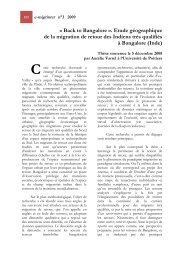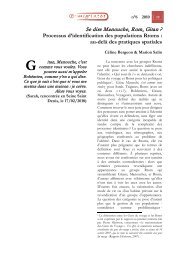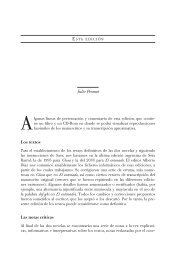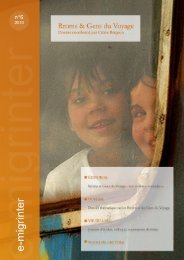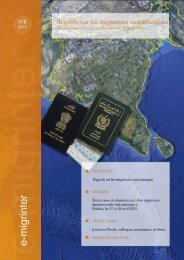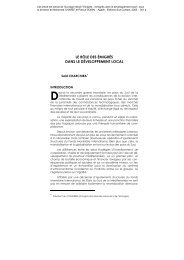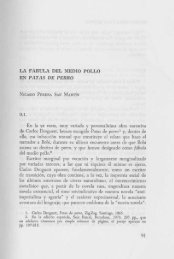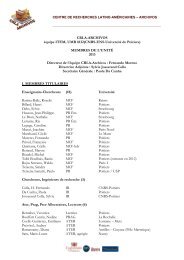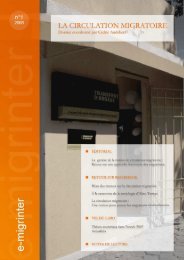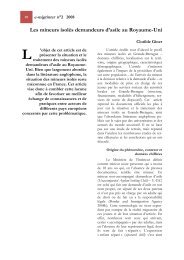e-migrinter 2010 numéro 05 - Maison des Sciences de l'Homme et ...
e-migrinter 2010 numéro 05 - Maison des Sciences de l'Homme et ...
e-migrinter 2010 numéro 05 - Maison des Sciences de l'Homme et ...
Create successful ePaper yourself
Turn your PDF publications into a flip-book with our unique Google optimized e-Paper software.
38 n°5 <strong>2010</strong><br />
example, be a participant in a labor mark<strong>et</strong><br />
and pay taxes in a soci<strong>et</strong>y without knowing<br />
the language or the cultural heritages of the<br />
dominant <strong>et</strong>hnic group. Moreover people<br />
belonging to minority groups may feel that<br />
their interests are not necessarily best served<br />
by cultural integration into the nation state.<br />
They may find it more beneficial to utilize<br />
transnational n<strong>et</strong>works (2007:1062). As<br />
Eriksen also points out that inclusion and<br />
exclusion, chosen or enforced, have to be<br />
taken into account, but these are often<br />
difficult to distinguish in real life. He<br />
maintains that we need to ask “which forms<br />
of exclusion are practiced in greater soci<strong>et</strong>y,<br />
and which are the requirements for<br />
inclusion” (Eriksen 2007: 1060). Is inclusion<br />
or exclusion exercised on the basis of<br />
perceived cultural difference, language<br />
abilities or social aspects with regard to, for<br />
example, work or housing? By using these<br />
concepts the emphasis is then not only on<br />
the agency of the immigrants but also that of<br />
the receiving soci<strong>et</strong>y as well.<br />
A question that needs to be raised in<br />
this context is: what does integration entail?<br />
How much does an immigrant have to<br />
change to prove his or her integration, and<br />
in which areas of life? How much diversity is<br />
the nation state willing to tolerate within its<br />
bor<strong>de</strong>rs, and how are the cultural bor<strong>de</strong>rs of<br />
the nation state <strong>de</strong>fined? Grillo (2007)<br />
<strong>de</strong>monstrates that the meaning of the<br />
concepts of integration and multiculturalism<br />
may differ and is not always clear to people.<br />
Moreover, are the perceptions of the<br />
authorities or of the immigrants more<br />
important in our evaluations of integration?<br />
In other words: for whom is ‘integration’?<br />
Theorizing about the inner dynamics and<br />
power differences within <strong>et</strong>hnic and national<br />
groups, such as those based on gen<strong>de</strong>r, age<br />
and class, is the dominant trend in current<br />
research. For example what is immigrants’<br />
position in the labor mark<strong>et</strong>, and are they<br />
exclu<strong>de</strong>d from particular aspects of it? What<br />
role does family play in this regard?<br />
These topics are addressed in this<br />
article about the integration and<br />
transnational practices of Filipinos in<br />
Iceland. The data on which this article is<br />
based is <strong>de</strong>rived from a larger <strong>et</strong>hnographic<br />
study that inclu<strong><strong>de</strong>s</strong> interviews with men and<br />
women living in the capital city area of<br />
Iceland as well as in smaller villages in other<br />
parts of the country. The participants in the<br />
study are of different backgrounds and have<br />
moved to Iceland from various islands of<br />
the Philippines since 1990.<br />
The Icelandic context of migration<br />
Twenty years ago only few people<br />
living in Iceland had foreign citizenship or<br />
were born abroad. Since then, there has<br />
been a large increase in immigrations. In<br />
1996 immigrants constituted 2% of the<br />
Icelandic population (<strong>de</strong>fined as born abroad<br />
with both parents born abroad). In 2004<br />
immigrants make up 4% of the population,<br />
and8.1% in 2008 (Garðarsdóttir, Hauksson<br />
and Tryggvadóttir 2009). Today, 75% if<br />
them come from Europe; Poles are by far<br />
the largest national group with 30% of the<br />
total number of immigrants in Iceland.<br />
About 15% of all immigrants in Iceland<br />
come from various Asian countries, mostly<br />
comes from the Philippines (Statistics<br />
Iceland 2009).<br />
Work has been the main reason for<br />
migration to Iceland, although family<br />
reunification and studying are also<br />
important. Economic transformations with<br />
growing privatization and increased<br />
<strong>de</strong>regulations from the 1990s resulted in an<br />
economic boom and consequently in a labor<br />
shortage in the country (Skaptadóttir 2004a;<br />
2004b; 2009). In the beginning, people were<br />
mostly nee<strong>de</strong>d for jobs in fish processing<br />
plants but were soon also in <strong>de</strong>mand for<br />
various jobs in the service sector, such as<br />
cleaning and care . These jobs are<br />
consi<strong>de</strong>red to be those of women, so there<br />
was originally a higher <strong>de</strong>mand for femaie<br />
(Skaptadóttir and Wojtynska 2008). After<br />
2000, with the construction of a large power



